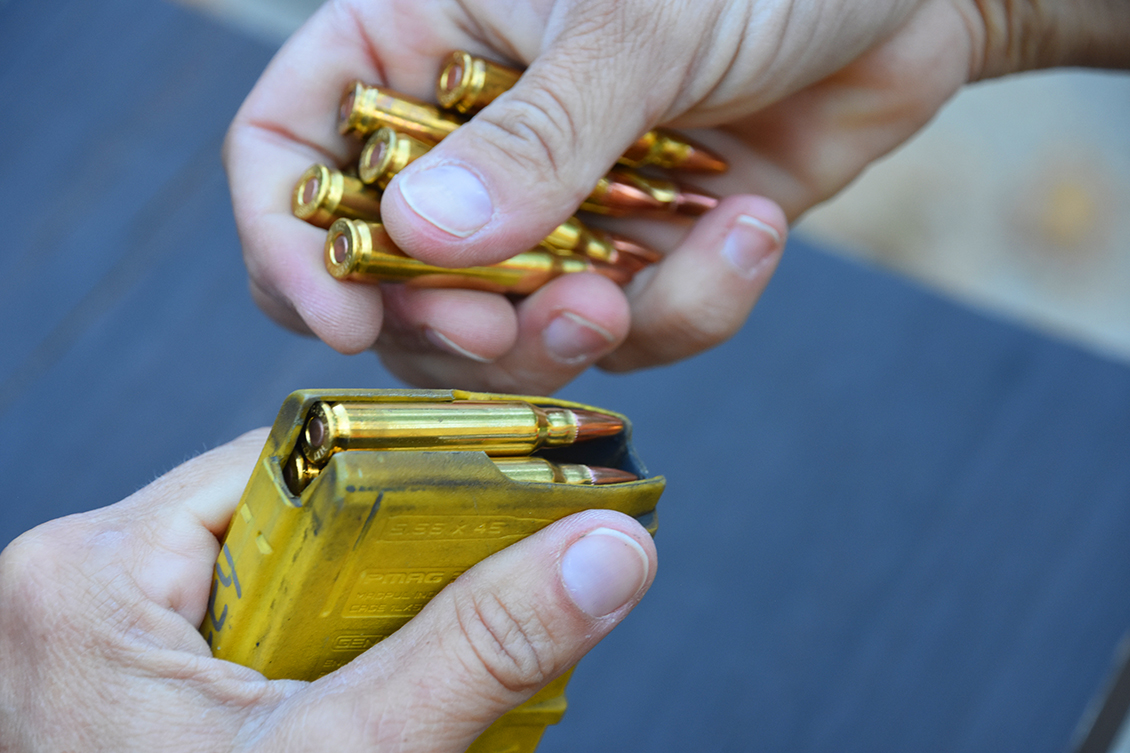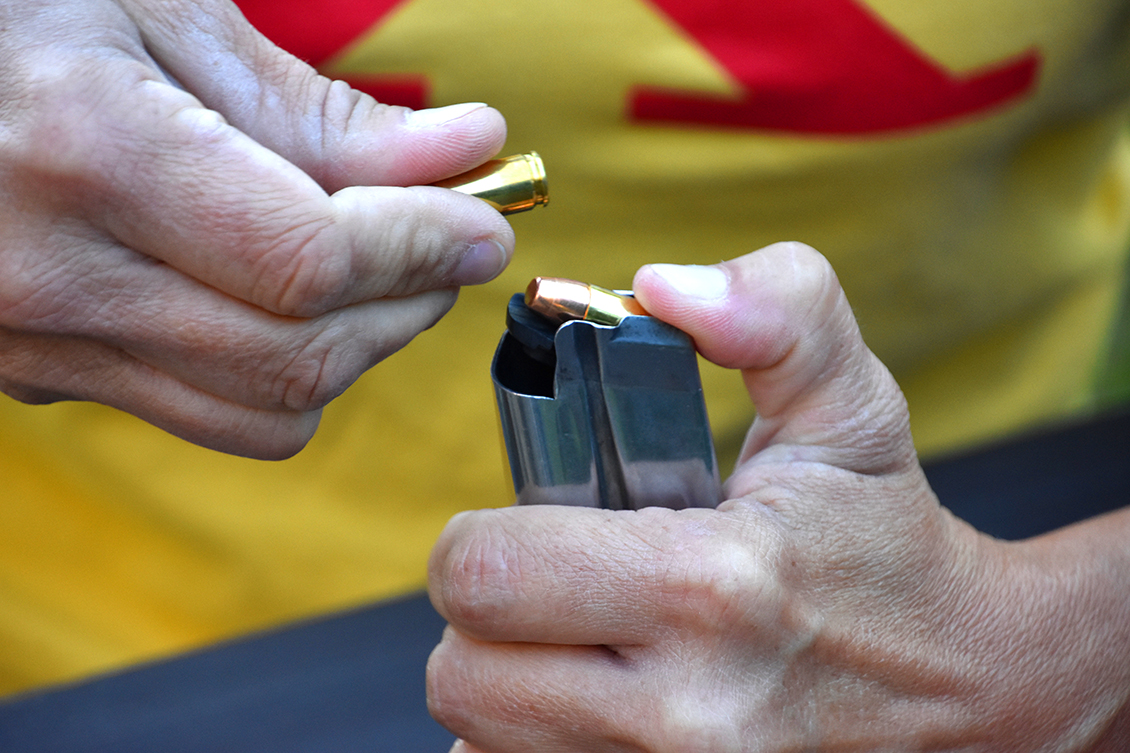Pistol and Rifle Magazine Loading 101
Loading magazines is a simple task. It can be made even easier by understanding a few basic principles related to the construction of a magazine.
Once you understand how a magazine works, paying attention to a few tips on technique will make loading mags simple.
How a magazine works:
Every magazine has a body, a spring, a follower and a bottom plate. The body of the mag holds the rounds, the follower allows the rounds to compress the spring and the bottom plate keeps it all contained; and allows for cleaning.
In order to get rounds into the magazine, the spring must be compressed inside the tube. The more the spring is compressed the more rounds you can load, but only to a certain limit. Do not try to overload your magazine as this can cause malfunctions in your gun’s performance.
Tip #1 - How to hold the magazine:
Pistol: Compressing the spring can be made easier by resting the base of the magazine against a hard surface such as a tabletop. Use the round in your hand to push down on the follower and compress the spring. As the round gets low enough to pass the feed lips (or top of the magazine) tube, you slide the round past. As you load more rounds, the spring is compressed more and the pressure will make it increasingly more difficult to get rounds into the magazine. Having the magazine resting against a solid surface will help you compress the spring as you push those final rounds in.
Rifle: The same advice helps when loading rifle magazines. A firm surface will help as you compress rounds. The difference between rifle and pistol magazines is that for your conventional AR style magazine, loading 223 or 5.56, you can just click or snap the round into place. You simply push the round past the feed lips and it will compress the spring as you load more. Where rifle magazines differ is loading for a bolt rifle or rifle that requires you to load it similar to a pistol magazine - push down with the base of the case until the spring is compressed enough that you can slide the round in and past the feed lips of the magazine and into place.
With rifle magazines, paying attention that the base of the round is against the back of the magazine will help make loading easier. One of the ways people run into trouble loading rifle mags is when the tip of the bullet catches on the front of the magazine because it’s not pushed back into place.
Tip #2 - How to hold rounds:
How you hold the round in your hand is another consideration. Grabbing them so they are facing the same direction will help make the process of loading your magazine faster. If you are working with bulk ammo, this is a little more difficult. But if you have ammo in a box, simply slide the box past 5-10 rounds and flip them into your hand. They should be generally facing the same direction. This works for rifle or pistol rounds.
Tip #3 - Magazine pressure and thumb placement:
Pushing down with your thumb on the back of the rounds already in the magazine will also help you to compress the spring. Some magazine springs are very strong and it can be difficult. However, pressure from your thumb combined with pushing the rounds below down with the round you are currently loading will help overcome that spring tension.
Tip #4 - Keep mags clean:
A clean magazine is important in the function of the firearm and ammo. If you drop your magazine in the dirt or sand, take it apart and clean it. If you’re unsure of how to do this, search online for a video of your firearm’s magazine and you’ll find the information you need. Even if you’re relatively certain how to disassemble your magazine, watching a video from the manufacturer or a gunsmith will give you insight into tips for your particular magazine or base pad.
Knowing how your magazines and base pads work and how to take them apart is a very helpful piece of knowledge to have.
When in doubt, seek information out!
Magazines are important in the function of your firearm! A semi-automatic firearm is designed to work with its intended magazine. The purpose of a magazine spring is to exert pressure on the rounds inside of it in order to push the next round up and feed it into place so that the bolt of your rifle or slide of your pistol can pick the round up and push it into the chamber.
Every firearm and magazine pairing can have small nuances that make it perform or not. Examples are an AR mag with a weak spring or an AR that doesn’t feed correctly - it’s always a good idea to try a different magazine before you mis-diagnose ammo or a gas system issue. So before you jump to conclusions, always try a different magazine, watch a video or stop in at your local gun shop and ask for help.
Make sure you are following Winchester on social media for more tips and information for the new firearm owner, and check out Winchester.comnewshooters for all the new gun owner info you could ask for in one place!






